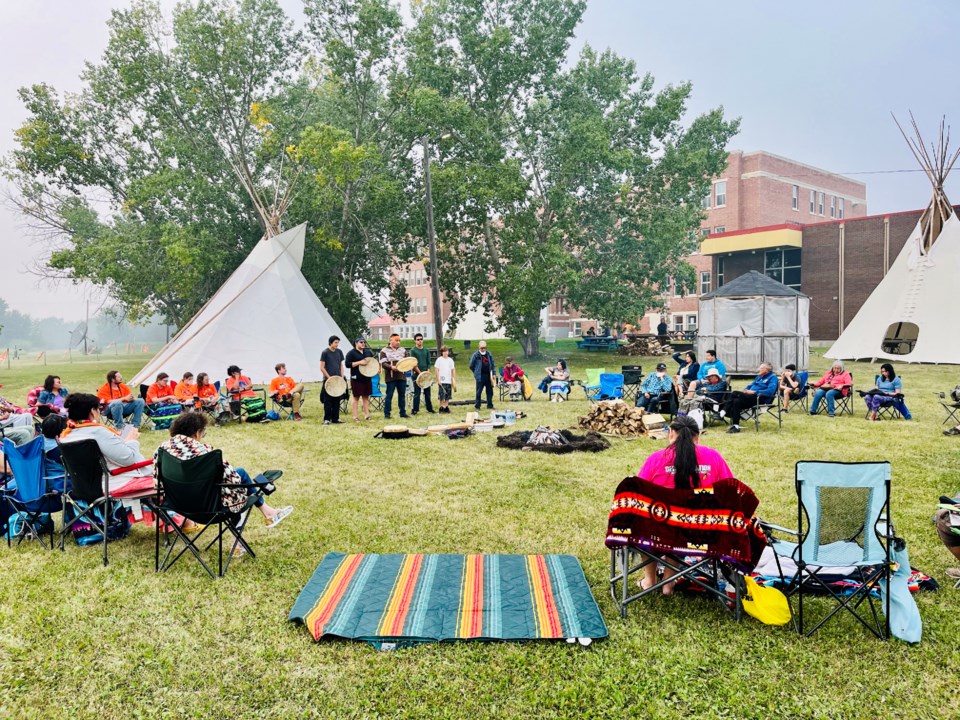ST. PAUL – The ongoing search for unmarked graves at the former Blue Quills Indian Residential School site near St. Paul, which University nuxełhot’į thaa?ehots’į nistameyimâkanak Blue Quills (UnBQ) currently occupies, entered its second phase in August.
The process of searching for unmarked burial sites by the IRS (Indian Residential Schools) Project Team from UnBQ, in partnership with the University of Alberta’s Institute of Prairie and Indigenous Archaeology (IPIA), began in August 2022 using ground-penetrating radar (GPR) and LiDAR technology.
Joel Cardinal, coordinator for the IRS Project Team, noted there was more than one location for the Blue Quills Indian Residential School. The location the IRS Project Team is responsible for is the current site of UnBQ, which is located west of St. Paul.
According to the Cardinal, the aim of the search involves educating others on the true history of what happened at Indian residential schools.
“That starts by uncovering the truth.”
In August 2024, Phase Two of the project started, utilizing more advanced technology that allows for more comprehensive coverage, said Cardinal. He explained it will take a while to analyze the data.
The results from Phase 1, conducted in 2022, were shared in April 2023, and a similar timeline is expected for the findings from Phase 2.
Phase 1 Findings
According to a summary report from the IPIA published in April 2023, retrieved from the UnBQ website, 19 spots called “reflections of interest” were identified.
The term "reflections of interest" refers to signals detected by GPR that look like what scientists have seen in areas where graves have been found before. “However, more information is needed in order to determine the exact nature of these reflections as we do not have comparison data of known graves in the area,” according to the report.
The IPIA team acknowledged the limitations of GPR, noting that it cannot always detect graves, especially if the soil conditions are challenging.
GPR is a technology that detects changes in the soil that may indicate the presence of grave shafts. It is not capable of confirming the presence of graves but can highlight areas that warrant further investigation.
Despite this, the initial results provide important information and a starting point for further exploration, according to the team. Re-analysis may follow, once more information to compare the results with – is found.
Other aspects
Cardinal told Lakeland This Week that there are many aspects that make up the IRS Project - in addition to ground search.
“That work includes research like archival research, interviewing survivors who attended Blue Quills Indian Residential School, engaging surrounding communities, and hosting gatherings and ceremonies to support the healing process.”
Cardinal said all of these pieces include very sensitive work, which can be triggering for many people.
The project is not only about locating unmarked burial sites, he acknowledged.
“One of our goals . . . is to support and uplift survivors and their families and support their healing process as well.”
Healing activities and ceremonies are being organized alongside the technical work, ensuring that survivors and their communities are involved and supported throughout the process.



